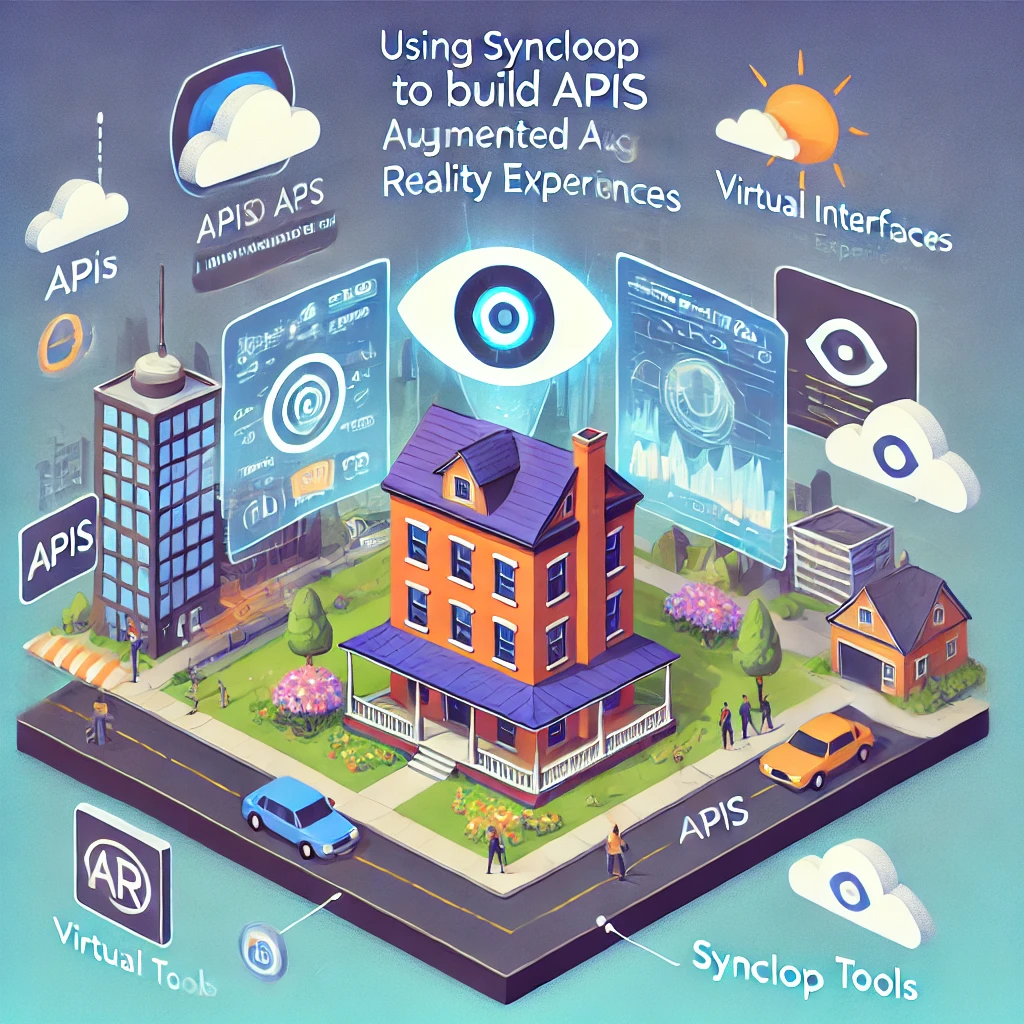Using Syncloop to Build APIs for Augmented Reality Experiences

Syncloop provides the tools needed to create APIs tailored for AR applications, offering real-time data handling, scalability, and workflow automation. This blog explores how Syncloop facilitates the development of AR APIs and outlines best practices for building interactive and responsive solutions.
The Role of APIs in AR Experiences
APIs power AR experiences by:
- Enabling Data Integration: Connecting AR applications with external systems, databases, and sensors.
- Real-Time Data Processing: Handling data streams from cameras, sensors, and user inputs.
- Object Recognition and Tracking: Facilitating AI-driven recognition and tracking of objects in real-world environments.
- Interactive Features: Enabling dynamic interactions, such as gestures or voice commands, with AR content.
- Scalability: Supporting growing numbers of users and devices in shared AR environments.
Challenges in Building AR APIs
- Low Latency Requirements Ensuring minimal delays to maintain responsiveness and immersion.
- High Data Throughput Managing large data streams from sensors, cameras, and user devices.
- Device Compatibility Supporting diverse hardware and software ecosystems.
- Integration Complexity Connecting APIs to backend systems, analytics platforms, and third-party tools.
- Security and Privacy Protecting sensitive user data and AR application interactions.
How Syncloop Simplifies AR API Development
Syncloop provides a robust platform to address the challenges of AR API development:
- Real-Time Processing Handle high-throughput data streams with low-latency processing for AR applications.
- Dynamic Data Mapping Normalize and transform data from multiple sources, such as sensors and AI models.
- Workflow Automation Automate complex workflows, such as image recognition or scene rendering.
- Scalable Infrastructure Support shared AR environments and increasing user demands with Syncloop’s cloud-native architecture.
- Integration Capabilities Connect APIs to AI models, cloud storage, and IoT devices seamlessly.
- Advanced Security Protect sensitive data with encryption, authentication, and access control mechanisms.
- Monitoring and Analytics Track API performance, user interactions, and workflow execution with real-time dashboards.
Steps to Build AR APIs with Syncloop
Step 1: Define AR Use Cases
Identify key functionalities for your AR application, such as:
- Object recognition and labeling.
- Dynamic content rendering based on user interactions.
- Real-time collaboration in shared AR environments.
Step 2: Connect Data Sources
Integrate APIs with data sources and external systems, such as:
- Cameras and depth sensors for real-time environment mapping.
- AI models for object detection and recognition.
- Cloud platforms for storing and retrieving AR content.
Step 3: Design API Endpoints
Define API endpoints for AR functionalities, such as:
- /ar/scan: Process and analyze live camera feeds.
- /ar/objects: Retrieve metadata and 3D models for recognized objects.
- /ar/collaborate: Enable multi-user interactions in shared AR spaces.
Step 4: Automate AR Workflows
Leverage Syncloop’s workflow automation tools to:
- Process incoming data streams and trigger scene updates.
- Synchronize AR content between multiple users in real time.
- Automate content recommendations based on user behavior and environment.
Step 5: Optimize for Low Latency
Configure APIs for minimal response times by:
- Using Syncloop’s caching tools for frequently accessed data.
- Leveraging edge computing for local data processing.
- Streamlining workflows to eliminate unnecessary steps.
Step 6: Monitor and Refine
Enable real-time monitoring to track API performance. Use Syncloop to:
- Measure latency and throughput for AR interactions.
- Detect and resolve workflow bottlenecks.
- Analyze user interactions to optimize AR features.
Best Practices for AR API Development
- Focus on Real-Time Processing Prioritize low latency and high responsiveness in workflows.
- Ensure Scalability Design APIs to handle increasing data and user demands seamlessly.
- Integrate Securely Use encryption, token-based authentication, and access controls to protect AR interactions.
- Adopt Modular Designs Create reusable components for common AR functionalities, such as object tracking or scene rendering.
- Monitor Continuously Use Syncloop’s monitoring tools to track performance and user feedback.
Example Use Case: AR Shopping Application
An AR shopping platform uses Syncloop APIs to deliver immersive user experiences:
- Object Recognition: Detects furniture and overlays virtual designs in real-world spaces.
- Real-Time Updates: Syncs changes in AR scenes as users move around.
- Content Recommendations: Suggests products based on user interactions and preferences.
- Collaboration: Allows multiple users to explore and design spaces together.
- Monitoring: Tracks API performance and user engagement for optimization.
Benefits of Using Syncloop for AR APIs
- Enhanced Responsiveness: Deliver real-time interactions with low-latency processing.
- Improved Scalability: Support growing user bases and shared AR environments seamlessly.
- Streamlined Workflows: Automate complex AR functionalities to reduce development overhead.
- Secure Interactions: Protect sensitive user data and API communications.
- Actionable Insights: Gain insights into user behavior and API performance with analytics tools.
The Future of AR API Development
As augmented reality continues to evolve, APIs will play a critical role in delivering immersive, interactive experiences. Syncloop equips developers with the tools needed to design scalable, secure, and responsive AR APIs, enabling cutting-edge applications across industries.
Image Description
A conceptual graphic showcasing APIs for augmented reality experiences built with Syncloop, featuring real-time processing, workflow automation, and multi-device synchronization. The image highlights seamless data integration and low-latency performance for AR applications.
Back to Blogs